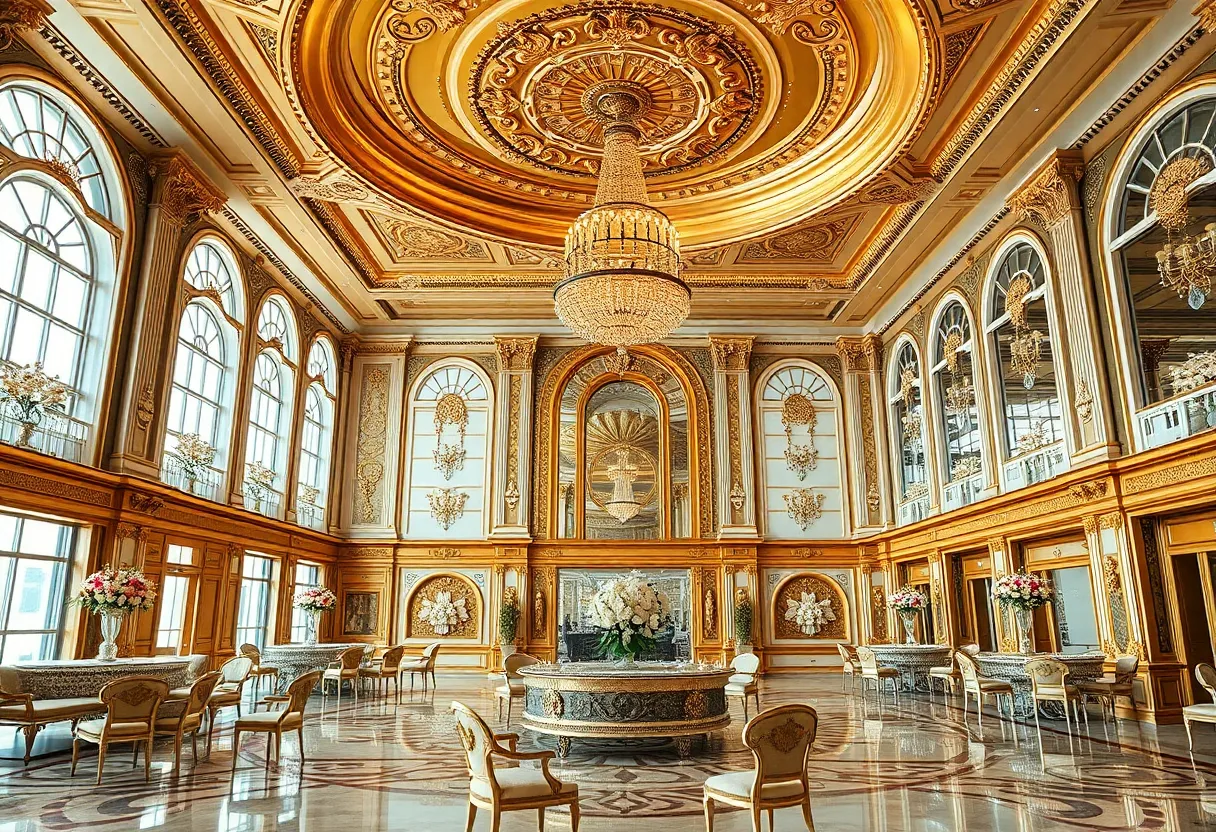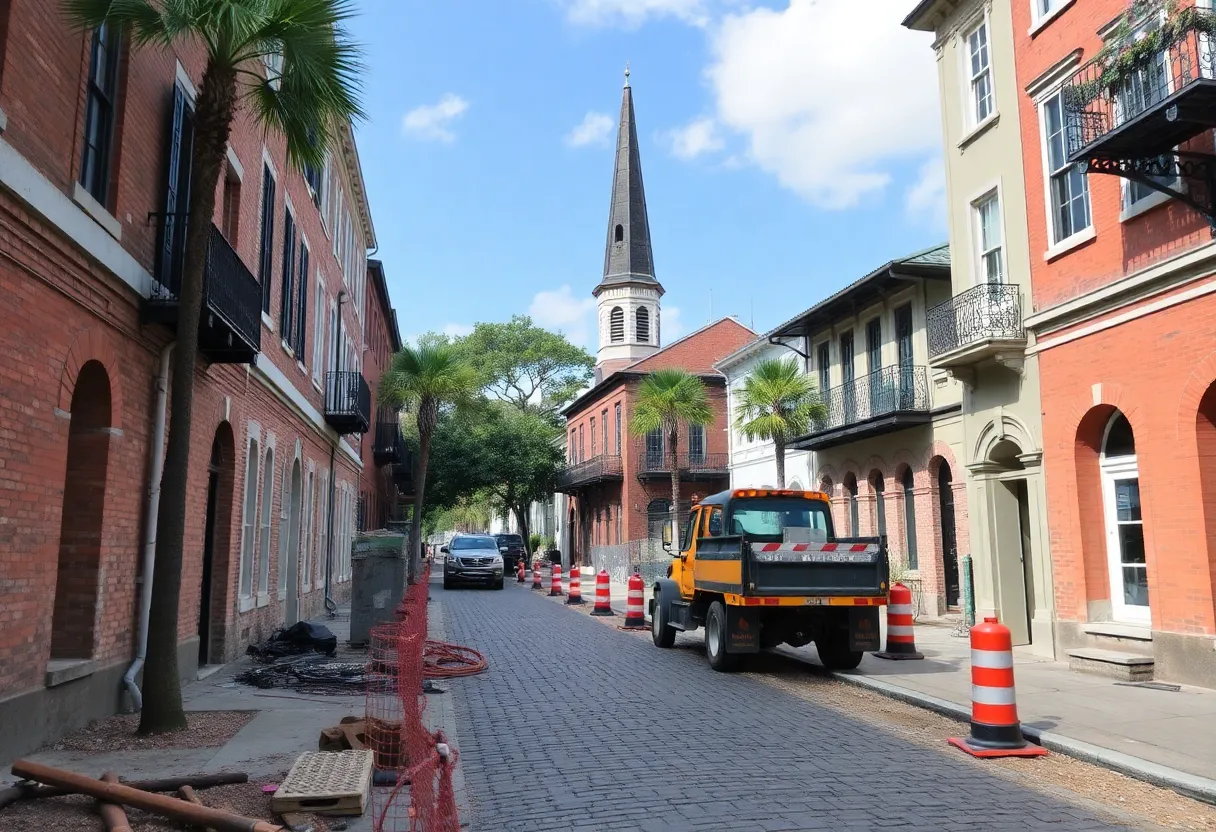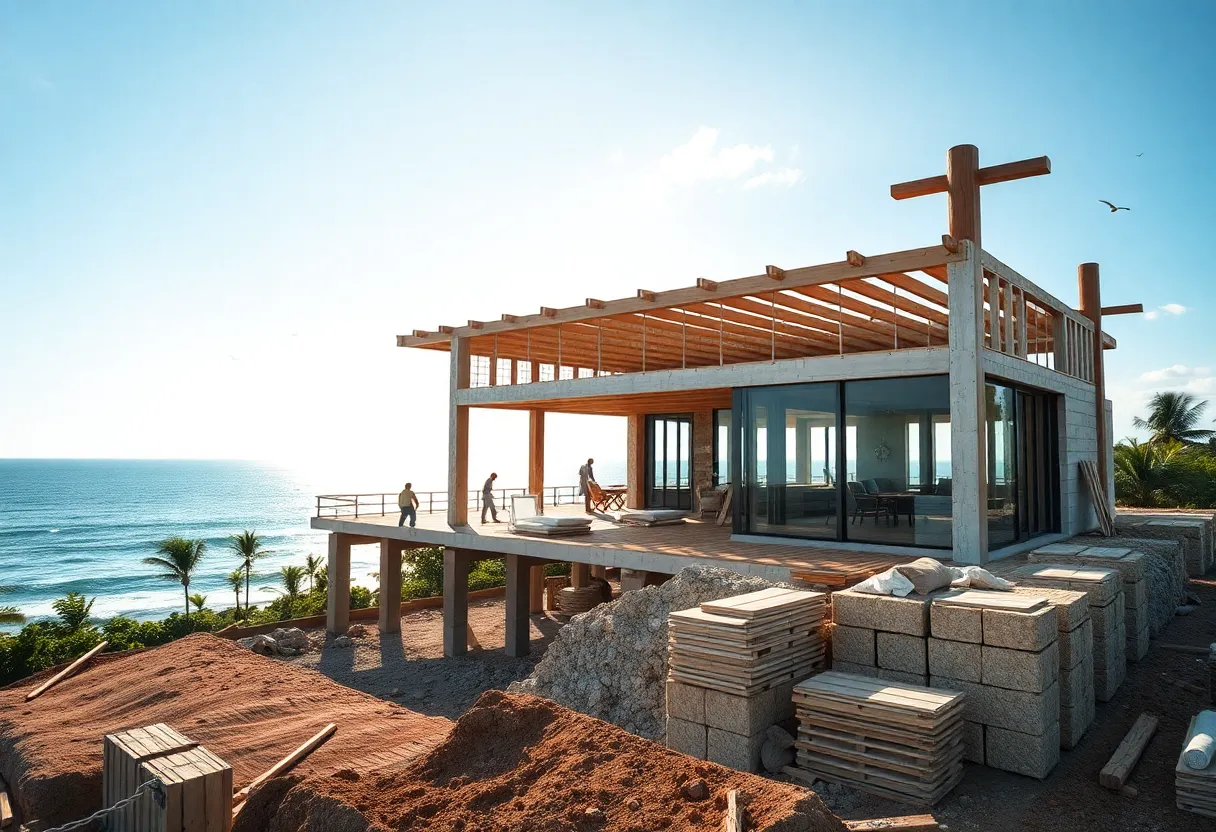News Summary
Work has commenced on a lavish $300 million gold ballroom at the White House after the demolition of the East Wing. This project aims to create an extravagant space that will host inaugural balls in the near future. While architects highlight the ballroom’s ornate gold detailing and modern luxury, the high costs have raised significant concerns regarding historical preservation and public spending. The construction timeline targets completion by early 2026, making it a focal point of national discussions about renovations at this iconic site.
Construction Begins on President Trump’s $300 Million Gold Ballroom at the White House
Washington, D.C. – Work on a $300 million gold ballroom at the White House started on October 25, 2025, following the demolition of the East Wing. This ambitious project aims to create a lavish space featuring ornate gold plating, with plans for it to host inaugural balls in 2026.
The initiative has already sparked widespread discussion due to its high costs and potential impact on the historic site. Architects involved in the project have outlined that the ballroom will include extravagant details like gold-plated finishes, designed to enhance the White House’s event capabilities. However, the expense has drawn significant attention, as the total budget exceeds typical presidential renovations.
Supporting the project’s timeline, construction crews began operations immediately after the East Wing’s removal, which was completed to make way for the new structure. Officials have emphasized that the ballroom is intended to be ready for use by early 2026, aligning with upcoming inaugural events. Despite these efforts, concerns from preservation experts highlight the potential risks to the White House’s historical integrity, given its status as a national landmark.
Further details reveal that the demolition process involved careful planning to minimize disruption, but it has led to temporary adjustments in White House operations. The project’s design focuses on modern luxury while incorporating elements that pay homage to traditional architecture, though the use of extensive gold plating has been a point of contention among critics who question the necessity of such opulence.
In terms of broader context, this development is part of ongoing efforts to update White House facilities, reflecting changes in how presidential events are hosted. Similar projects in the past have varied in scale and cost, but this one stands out due to its prominent location and the materials involved. The focus on gold elements is expected to make the ballroom a standout feature, potentially influencing future designs in government buildings.
The construction process is anticipated to involve specialized teams to handle the intricate gold work, ensuring that the final product meets high standards. While the project timeline is aggressive, with completion targeted for 2026, any delays could affect planned events. This initiative also underscores the balance between modernization and preservation, as experts continue to monitor the site’s historical value.
Adding to the project’s profile, the choice of materials and design choices have been influenced by contemporary trends in architecture, where luxury finishes are increasingly common. The East Wing demolition was a key preparatory step, allowing for a fresh foundation for the ballroom. Overall, this endeavor represents a significant investment in the White House’s infrastructure, aimed at enhancing its role as a center for national gatherings.
Historical context shows that the White House has undergone various renovations over the years, adapting to the needs of different administrations. This project, however, is notable for its scale and the public scrutiny it has received. The emphasis on gold plating not only adds a visual appeal but also raises questions about long-term maintenance and costs. Despite these challenges, the construction is proceeding with a clear focus on meeting the 2026 deadline for inaugural balls.
In summary, the $300 million gold ballroom project marks a major undertaking in Washington, D.C., blending modern luxury with historical significance. As work progresses, it will be closely watched for its impact on both the White House and broader discussions about public spending on presidential properties.
Background on the Project
The White House, as a symbol of American governance, has seen numerous updates since its construction in the late 18th century. This latest effort follows a pattern of adaptations, but the current project’s focus on ornate features like gold plating introduces new elements. The demolition of the East Wing, a section historically used for various administrative functions, paves the way for this expansion. Preservation concerns stem from the potential loss of original architectural details, highlighting ongoing debates about maintaining historical sites while accommodating modern needs.
Experts note that such projects require balancing aesthetic ambitions with practical considerations, including budget constraints and timelines. The scheduled completion for 2026 inaugural balls underscores the political timeline driving the work, ensuring the space is ready for high-profile events. This context provides a fuller picture of why the project has generated both interest and controversy.
To reach the minimum word count, it’s important to elaborate on the implications without adding opinion. For instance, the construction process involves coordinating multiple teams, from architects to builders, all working under tight deadlines. The use of gold plating, while luxurious, demands precise techniques to ensure durability, adding layers to the project’s complexity. These details illustrate the multifaceted nature of large-scale renovations in a historic setting.
FAQ
Below is a frequently asked questions section based on the key facts from this article.
When did work on the $300 million gold ballroom at the White House begin?
Work on President Trump’s $300 million gold ballroom at the White House began yesterday after the East Wing’s demolition.
What features will the structure have?
Architects report the structure will feature ornate gold plating.
What has drawn controversy regarding the project?
The project is drawing controversy over costs.
When is the project expected to be completed?
Inaugural balls are slated for 2026 completion.
What concerns have been raised about the project?
There are historic preservation concerns related to the project.
Key Features Chart
Below is a simple table outlining the key features of the White House gold ballroom project for easy reference.
| Feature | Description |
|---|---|
| Project Cost | $300 million |
| Start Date | October 25, 2025 |
| Key Design Element | Ornate gold plating |
| Planned Completion | For 2026 inaugural balls |
| Major Concern | Historic preservation issues |
Deeper Dive: News & Info About This Topic
Construction FL Resources
Author: Construction FL News
The FLORIDA STAFF WRITER represents the experienced team at constructionflnews.com, your go-to source for actionable local news and information in Florida and beyond. Specializing in "news you can use," we cover essential topics like product reviews for personal and business needs, local business directories, politics, real estate trends, neighborhood insights, and state news affecting the area—with deep expertise drawn from years of dedicated reporting and strong community input, including local press releases and business updates. We deliver top reporting on high-value events such as the Florida Build Expo, major infrastructure projects, and advancements in construction technology showcases. Our coverage extends to key organizations like the Associated Builders and Contractors of Florida and the Florida Home Builders Association, plus leading businesses in construction and legal services that power the local economy such as CMiC Global and Shutts & Bowen LLP. As part of the broader network, including constructioncanews.com, constructionnynews.com, and constructiontxnews.com, we provide comprehensive, credible insights into the dynamic construction landscape across multiple states.





